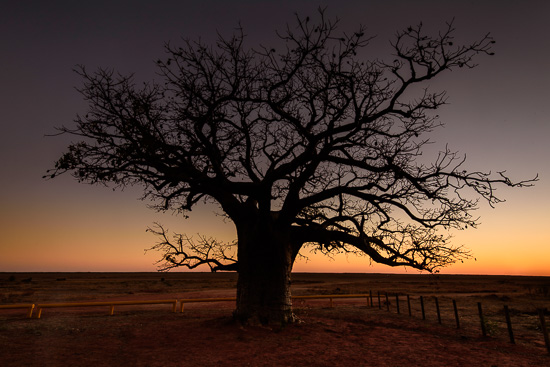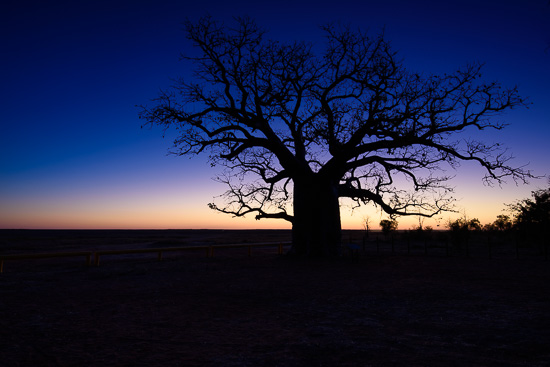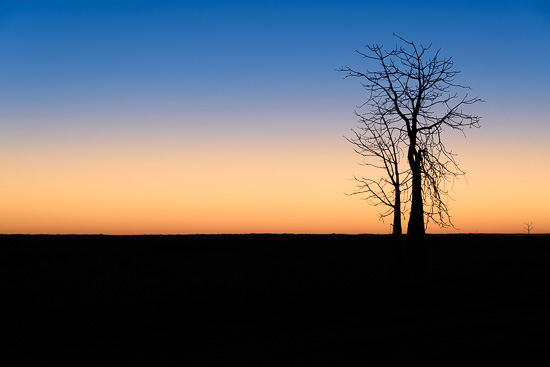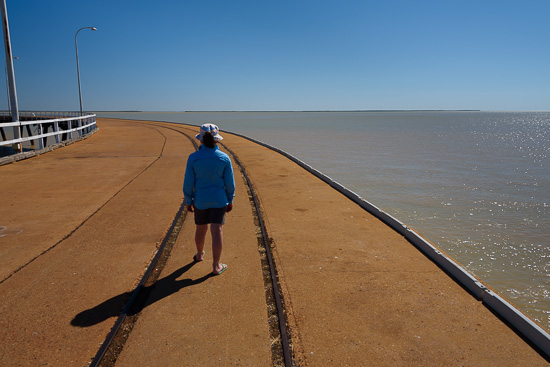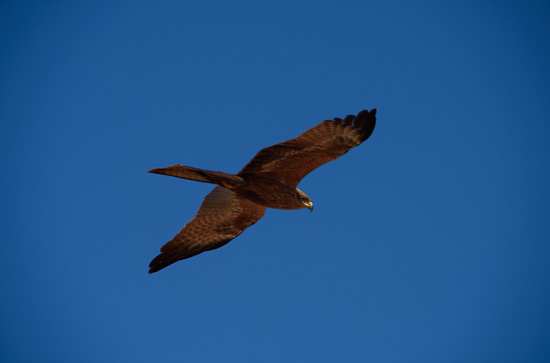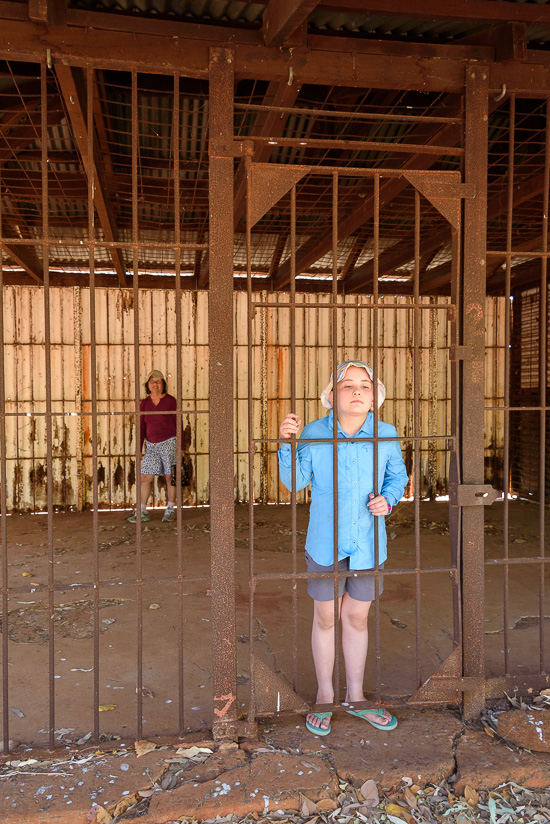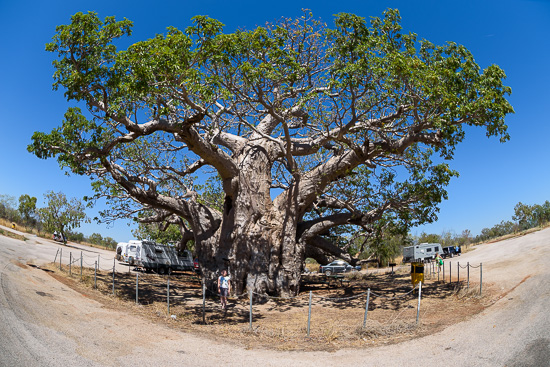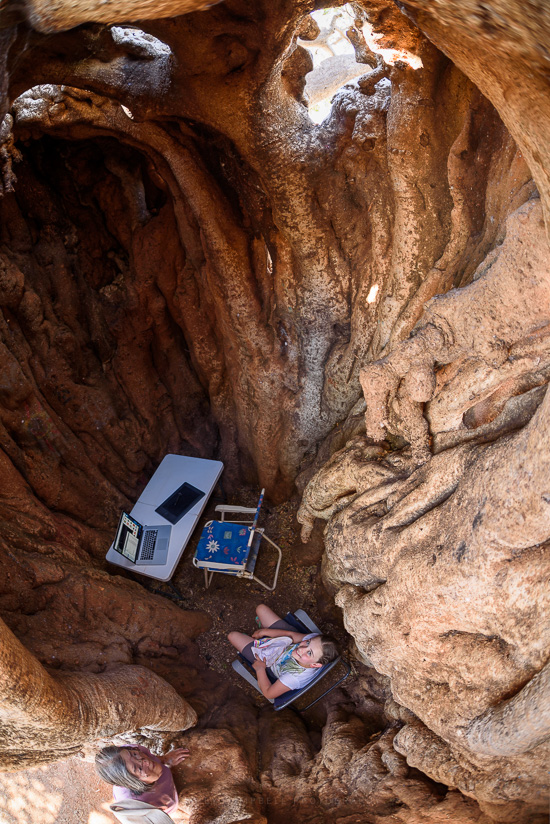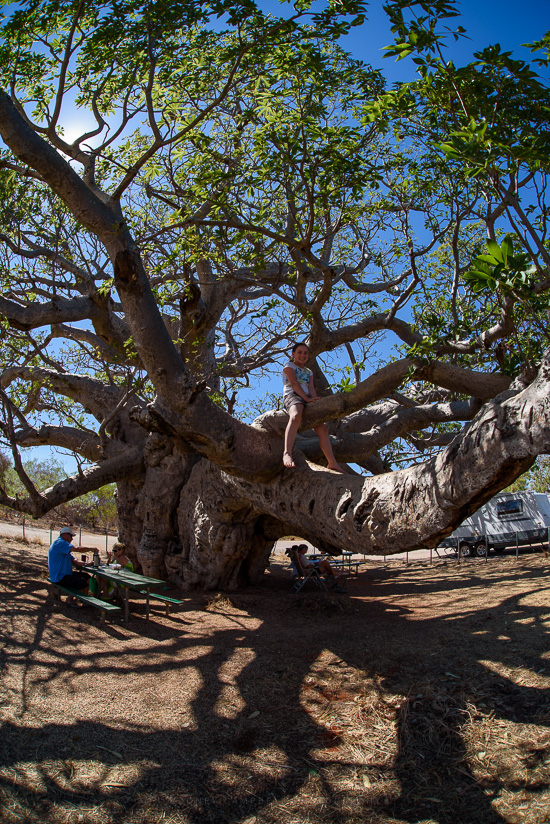Archive for October, 2015
The Dinner Tree…
by Rodney Campbell on Oct.23, 2015, under Life, Photography
On the edge of Derby lies “The Dinner Tree” – a large boab tree right on the edge of a large flat.
The Dinner Tree
This historic area was the midway point for drovers who took cattle from the Kimberley stations to the ships at the Derby wharf. They would stop at the trough near the Prison Boab Tree and the next stop would be this One Mile Dinner Camp. Here they stopped and ate until the ship berthed and then they would walk the cattle along the pastoral trail across the mud flats.
Note: These photographs (especially the wider shots) look much better when larger – so click any of the images below to see larger versions in an inline overlay slideshow gallery viewer.
Twilight Silhouettes
The light and colour at sunset – even without any clouds in the sky for weeks on end – was beautiful. Rich bold colours giving way to soft lovely colours as the sun dropped. Spectacular stuff.
Simple Expressions
Derby Coast…
by Rodney Campbell on Oct.22, 2015, under Life, Photography
Derby is a town in the Kimberley region of Western Australia. Along with Broome and Kununurra, it is one of only three towns in the Kimberley to have a population over 2,000.
It’s located about 220 north east of Broome on King Sound. Derby has the highest tides of any Australian port, with the peak differential between low and high tide reaching a staggering 11.8 metres. That means there is an enormous amount of water rushing in and out every 6 hours!. It’s also the second highest in the southern hemisphere.
Derby Wharf
Note: These photographs (especially the wider shots) look much better when larger – so click any of the images below to see larger versions in an inline overlay slideshow gallery viewer.
Derby was famous in the 1920s as the terminus of the first scheduled aviation service in Australia, West Australian Airways Ltd. They began their service with a first flight on 5 December 1921. At one time the Perth to Derby service was the world’s longest passenger airline route.
Considering its remote location the town is surprisingly big, but very spread out. There’s a main road which sort of comes into town and snakes through and eventually takes you to the Derby Wharf. Just follow the boabs (you’ll understand if you ever see the main street).
The first wharf, built in 1894, was a wooden T shaped structure located at the northern end of the present steel and concrete jetty. It was linked to the town of Derby by a horse drawn tramway. The last passenger ship visited in 1973. Now-a-days, barges exporting lead and zinc concentrates from the Cadjebut Mine at Fitzroy Crossing and pleasure and tourist craft are the main vessels visiting the jetty.
Kite
Old Derby Gaol
The Prison Tree…
by Rodney Campbell on Oct.21, 2015, under Life, Photography
The Boab Prison Tree is a large hollow Adansonia gregorii (Boab) tree just south of Derby.
This huge tree is believed to be around 1,500 years old and is an incredible 14 metres in circumference. With its hollow centre and door cut into its side, the Boab Prison Tree was once used by early police patrols as a staging point for prisoners being walked into Derby.
The Prison Boab
Today, the tree is a registered Aboriginal Site and is of cultural significance to local tribes and has become a local tourist attraction.
Note: These photographs (especially the wider shots) look much better when larger – so click any of the images below to see larger versions in an inline overlay slideshow gallery viewer.
Very large but not as large as the tree we’d stayed under the evening before.
The Boab Rest Area…
by Rodney Campbell on Oct.20, 2015, under Life, Photography
We were still travelling west towards the western coast and the seaside town of Derby. Located 156km NW of Fitzroy Crossing it is just off the highway around a very very large boab tree. We arrived early at the Boab Rest Area which allowed us to get a good spot in the shade next to the tree.
Boab Rest Area
The Boab Rest Area lives up to it’s name with this magnificent enormous specimen, they say it is perhaps 1500 to 2000 years old. Although you see Boab trees all along the route that we had driven so far, some very large in dimension, this specimen was of gigantic proportions and perhaps the largest we saw up close.
Note: These images (especially the wider shots) look much better when larger – so click any of the images below to see larger versions in an inline overlay slideshow gallery viewer.
It was so big that it had a “room” inside the trunk which was large enough to setup a table and some chairs inside. This is the view looking down from a small hole in the “ceiling” above with the fisheye lens.
Boab Room
My daughter and I setup inside where it was cooler to escape the heat outside. We spent the next few hours editing photos on my laptop inside this Boab room :).
The Australian Boab tree (Adansonia gregorii) is in the family Malvaceae. It is related to the Madagascan and African Adansonia species known as Baobabs. Sometimes called a “bottle tree”, in Australia they are usually referred to as just Boabs. The name “bottle tree” relates to the swollen trunk that can reach a massive girth of up to 20 metres, about as big as this one was.
Endemic to Australia, Boabs occur in the Kimberley region of Western Australia and east into the Northern Territory.
The trees are deciduous, dropping all their leaves during the dry season. Since the dry season is also the main tourist season, most travellers only get to see the grey brown skeletons. Many of the boabs we had seen so far were like this – no leaves – but this one was still covered in leaves which gave it a very different look and feel.
The Middle of Nowhere…
by Rodney Campbell on Oct.19, 2015, under Life, Photography
We had planned to spend two nights in Winjana Gorge however the road was currently too bad for us to go in. Instead we started heading further west – travelling in the middle of nowhere.
With daylight dropping fast we ended up staying in a random clearing at the intersection of the Great Northern Highway and Winjana Gorge Road.
